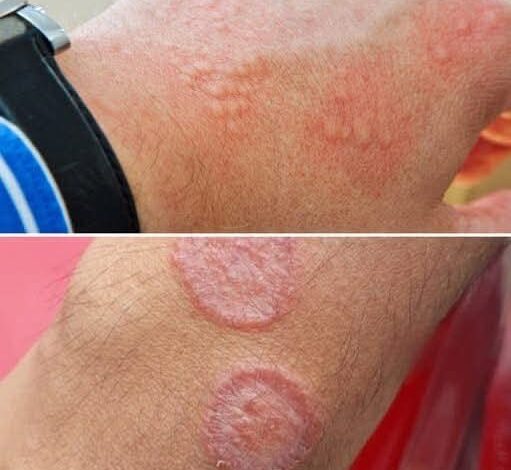
Skin in the groin area goes through a lot — constant warmth, friction, tight clothing, sweat, and frequent grooming. It’s no surprise that irritation and rashes are common there, but understanding why they happen makes all the difference in treating and preventing them. Many of these issues are harmless yet uncomfortable, and most can be resolved with proper care and a few simple adjustments.
One of the most frequent culprits is ingrown hair. After shaving or waxing, a hair can curl back under the skin instead of growing outward. The result is a small red bump that may itch or hurt and sometimes fills with pus. The worst thing you can do is squeeze it. That risks infection and scarring. Instead, apply a warm compress for a few minutes several times a day to soften the skin, gently exfoliate the area to free trapped hairs, wear loose clothing to reduce friction, and give your skin a break from shaving until the irritation fades.
If the bumps are more widespread — resembling tiny pimples or clusters of red dots — you could be dealing with folliculitis, an inflammation of the hair follicles. It’s often triggered by bacteria or yeast that thrive in heat and moisture, or by friction from tight clothing, especially after workouts. Hot tubs with poor sanitation are another notorious cause. Mild cases usually respond to over-the-counter antibacterial cleansers and a thin layer of topical antibiotic. For more persistent flare-ups, a doctor may prescribe stronger topical or oral medication to clear the infection.
Sometimes the irritation follows a recognizable pattern: red, scaly, or ring-shaped patches that itch and spread along the inner thighs or groin folds. That’s a fungal infection commonly known as jock itch (tinea cruris). The fungus responsible loves warm, damp environments, making this area a perfect breeding ground. The key to getting rid of it — and keeping it away — is to stay dry. After bathing, pat the area completely dry, use breathable cotton underwear, avoid tight clothing, and apply an antifungal cream as directed. Continue using it for about a week after the rash disappears to prevent recurrence.
Not every rash is from infection. Sometimes the skin simply rebels against something it touches — a condition known as contact dermatitis. This reaction often appears as redness, itching, and small blisters shortly after exposure to irritants like scented soaps, detergents, fabric dyes, or latex waistbands. The first step is eliminating the trigger: switch to fragrance-free, hypoallergenic products and loose, natural fabrics. Applying a small amount of 1% hydrocortisone cream can calm itching and inflammation. The skin usually improves within a few days once the irritant is removed.
Another common problem is intertrigo, a rash caused by skin-on-skin friction and trapped moisture in folds. It appears as red, raw, sometimes stinging skin that may develop an unpleasant odor if bacteria or yeast take hold. Airflow and protection are your best friends here. After washing, pat the area dry rather than rubbing. You can even use a hair dryer on a cool, low setting to eliminate any lingering moisture. Apply an absorbent powder or a thin barrier layer of zinc oxide or petroleum jelly to reduce friction. If the area becomes painful or starts to ooze, a healthcare provider can prescribe an antifungal or antibacterial cream.
Preventing groin irritation is mostly about consistent hygiene and common sense. Shower after exercise or sweating, dry thoroughly, and wear moisture-wicking underwear — synthetic athletic fabrics or breathable cotton both work well. Rotate your clothing regularly, avoid sitting too long in damp gym clothes, and if shaving causes repeated problems, consider trimming instead. Keep soaps and detergents mild and free of artificial fragrances or dyes, which are common skin irritants.
While most groin irritation can be handled with at-home care, there are times when it’s smart to see a doctor. Seek medical advice if your rash or bumps don’t improve within a week or two, if they spread quickly, cause severe pain, or if you notice pus, significant swelling, or fever. Those could be signs of a deeper bacterial infection or another underlying issue that requires targeted treatment.
Taking care of the skin in this sensitive area is ultimately about balance — keeping it clean, dry, and protected without overdoing it. Too much washing or scrubbing can make things worse, while too little care allows moisture and bacteria to linger. Find a middle ground that respects your skin’s natural barrier.
Even though groin irritation can be embarrassing to talk about, it’s extremely common and nothing to feel ashamed of. Most cases respond quickly to simple, consistent care. With the right approach — gentle cleansing, breathable fabrics, and mindful grooming — you can prevent flare-ups, soothe discomfort, and keep the skin healthy and irritation-free.
Healthy skin in this area isn’t about perfection — it’s about awareness. Pay attention to how your skin reacts to products, fabrics, and habits. A few thoughtful changes today can save you weeks of itching or irritation later. Your skin will thank you for treating it with patience, protection, and care.



